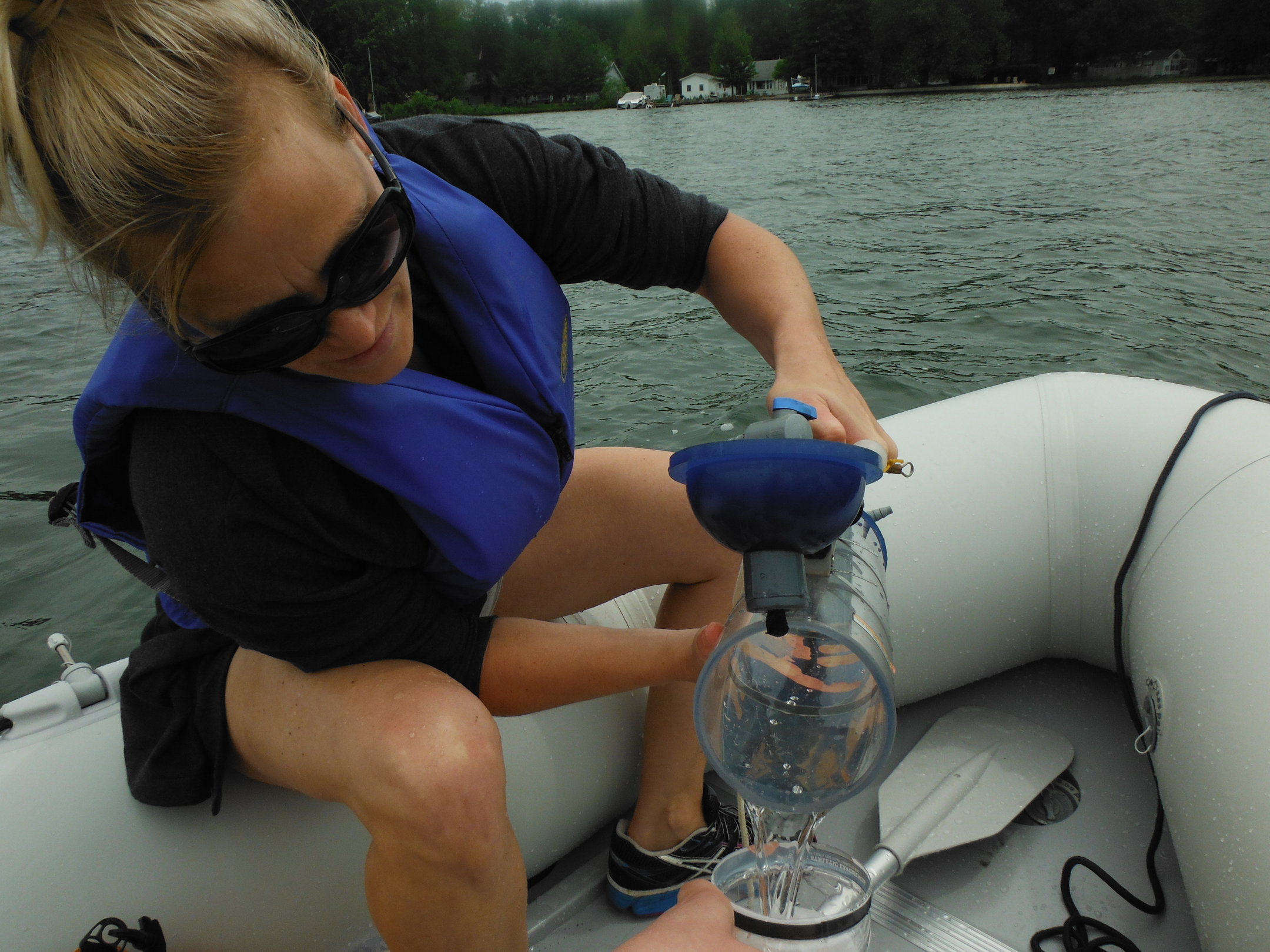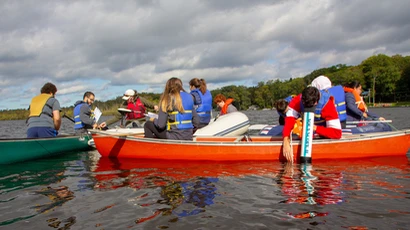My name is Jennifer Phillips Russo and I am currently conducting my graduate research work under the mentorship of  Dr. Courtney Wigdahl-Perry in the Biology Department, Environmental Sciences Program. My thesis proposal is titled: CHANGES IN CYANOBACTERIA AND SPECIES COMPOSITION OF THE PLANKTON COMMUNITY OF A FRESHWATER LAKE IN RELATION TO THE EXISTING WATER QUALITY AND EXPERIMENTAL NUTRIENT ADDITION BIOASSAYS.
Dr. Courtney Wigdahl-Perry in the Biology Department, Environmental Sciences Program. My thesis proposal is titled: CHANGES IN CYANOBACTERIA AND SPECIES COMPOSITION OF THE PLANKTON COMMUNITY OF A FRESHWATER LAKE IN RELATION TO THE EXISTING WATER QUALITY AND EXPERIMENTAL NUTRIENT ADDITION BIOASSAYS.
Healthy lakes and their shores not only provide us with a number of environmental benefits but they influence our quality of life and strengthen our economy. Unfortunately, water quality is deteriorating in many lakes around the world, with the potential for major economic consequences. Although algal blooms can be natural phenomena, Harmful Algal Blooms (HABs) frequency has increased in many systems due to high nutrient availability from human activity. Shifts in species composition have often been attributed to changes in nutrient supply ratios, primarily nitrogen:phosphorus ratios (N:P). Cyanobacteria, known commonly as blue-green algae, are photosynthetic prokaryotes, which commonly form harmful algal blooms in freshwater lakes. This group of algae can produce toxins in certain conditions including hepatotoxins, neurotoxins, may also produce toxic alkaloids, causing gastrointestinal symptoms or kidney disease in humans. The aim of this study is to investigate the seasonal fluctuation and species composition of phytoplankton community structure in relation to water quality parameters at Chautauqua Lake. It is necessary to identify the growth-limiting nutrients responsible for HABs development and proliferation for future management decisions.
In temperate lakes, phytoplankton become increasingly limited by nutrients as the physical habitat changes from cool and well mixed to warm and stratified. I expect to see a marked increase in biomass, measured in chlorophyll, as the water temperature increases. The effect of nutrient manipulation assays on phytoplankton biomass can be quantified by measuring the community growth response to a controlled nutrient environment over a seven-day interval. I will examine the persistence, duration, and frequency of harmful algae blooms (HABs) seasonally for comparison with corresponding water chemistry and parameters, including temperature and stratification -- as well as which nutrient or nutrients (N, P, NH4, NH4+P, or N+P) drives their production. The objectives are to determine: (i) whether phytoplankton growth is controlled by N and/or P availability and (ii) which cyanobacteria taxa are most dominant during bloom events. I believe that my research with the phytoplankton populations and the effects of nutrient loading, as drivers of eutrophication, is a key factor necessary to aid in lake management plans.
I am honored to be a part of the graduate program at the State University of New York at Fredonia, not only for the education I receive, the state-of-the-art science facility, but also for the opportunities that are provided for me. I have gone to a scientific working conference where limnologists from across the nation sit down and discuss their work, how we can collaborate, and how we can get our research out to the public. Dr. Wigdahl-Perry and I have attended many meetings with lake associations, watershed coordinators, recreational groups, county legislators, and more in regards to how our science can benefit their management decisions and how we, as a community, can work together. My graduate experience has offered many contacts within my field of interest and has fostered positive working relationships. I am confident that my graduate educational experience at the State University of New York at Fredonia is well preparing me for my future.
Jennifer Russo
Graduate student

